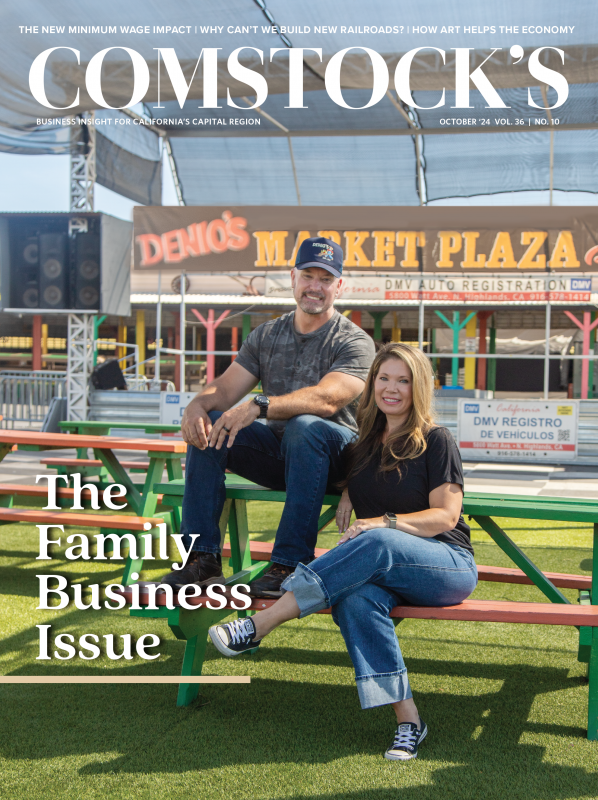Take a road trip through the Central Valley, and you’re guaranteed to see a freight train rolling through the farmland on tracks that are among the oldest in the state. These lumbering diesel behemoths carry everything from couches to coal, and they ride the longest rail network in the world to carry goods from coast to coast. These trains, an iconic image of the American West, inspired writers from Jack London to John Steinbeck. But nearly a century after Steinbeck published “The Grapes of Wrath” — and despite a $2 billion project — it’s still close to impossible to commute by rail between most of the major cities in the valley.
In March of 2020 the San Joaquin Regional Rail Commission solicited public comment on its expansion plans for the Central Valley. The commission published a lengthy draft environmental impact report for Valley Rail, a proposed extension to the train network that would link the Central and Silicon valleys, extend the Altamont Corridor Express, or ACE, commuter rail from Modesto in the south to Natomas in the north with regular stops along the route, and bring regular Amtrak services from Bakersfield to downtown Sacramento.
In addition to building new stations and zero-emission trains, the commission also hoped to build a skilled workforce through the creation of The Rail Academy of Central California, which will partner with Sacramento City College to address the challenges posed by an aging rail workforce and serve would-be rail workers from disadvantaged communities. However, four years after that report was published, ground has not been broken on most of the stations, and delays and costs have spiraled.
Currently, just two trains a day operate between Stockton and Sacramento, and driving on Interstate 5 or California Route 99 can be heavily delayed. Plans for a connection across Altamont Pass and north-south along the San Joaquin Valley were in place long before commute patterns changed due to work from home orders in 2020, but they remain largely in the planning stage. While the Rail Academy has opened its doors, its graduates won’t be able to work in the expanded rail network that their communities were promised.
The ACE extension, which would bring the popular commuter rail service to Sacramento and transform the commuter experience, would require the creation of six new stations. Each station would use a similar design but with “elements of distinction” to reflect the communities they served. Trains were supposed to begin rolling on existing freight tracks in 2023. However, the project has been caught in spiraling delays and launch dates have been pushed back to 2030 and the San Jose Regional Rail Commission broke ground on just one of the half dozen proposed new stations as of late summer 2024.
There’s no single reason for the project’s delays and increasing costs, but SJRRC says that cooperation with the host railroad has been particularly challenging. While the project initially planned to build six new stations from Lodi to Natomas and a maintenance yard in Natomas, it hoped to do so relatively fast as it did not need any new train tracks to be laid. The extension of ACE trains would run on the rails of the little-used Sacramento Subdivision, which at times runs parallel to the Sacramento RT Light Rail Blue Line, but extends from Marysville to Stockton. Passenger trains have not run regularly along this section of Union Pacific-owned tracks since 1970, but the project plans to have them doing so again at some point in the next decade. Siding and other improvements would be required, but the actual tracks themselves were already in place, which would seem to make the project considerably less costly and complex.
David Lipari, a spokesman for the SJRRC, told Comstock’s that “Coordination with the host railroads and utilities have been two of the most critical delay items.” Although the Valley Rail project does not require the construction of new rails, it does require the owners of the existing rails to consent to any plans. The ACE runs entirely on Union Pacific tracks and will do the same after expansion. However, sidings, culverts and other modifications will need to be made to accommodate the higher traffic and allow trains to pass on the busy tracks. Each specific change to the tracks requires three rounds of reviews by Union Pacific as the drawings become more detailed.
Public records obtained by Comstock’s through the California
Public Records Act show that a meeting of the SJRCC’s
Station/Facilities Development Committee saw members express
frustration with the delays caused by Union Pacific. Notes from
the meeting show that one member felt that “requirements that are
being put on the Rail Commission by the railroads, specifically
Union Pacific,” were a major cause of delays. In particular, the
member cited the need for longer sidings, which are akin to pull
outs where one train can pass another.
Union Pacific has asked SJRCC to incorporate these longer
sidings, sometimes several thousand feet longer, into its
construction.
However, many of these changes are not required for commuter trains but only for longer freight trains, leaving the taxpayer footing the bill and the railroad company reaping the rewards. As one member of the committee put it, “At some point, the Rail Commission is doing 100% of UP’s work for them.”
Lipari says that SJRRC’s planners have taken steps to streamline the approval process as much as possible, including “proactively progressing design based on feedback on one project to other related projects, and creating a standardized design criteria manual to ensure constancy in submissions.” However, even temporary changes, such as an extension of services to Sacramento using temporary boarding facilities while stations are constructed, require “detailed negotiations” with Union Pacific, according to public records obtained by Comstock’s. Union Pacific did not respond to requests for comment for this story.
In the same meeting, commission members noted that a change in coding since the initial plans were made meant that stations must now incorporate more electric vehicle chargers. Again, this requires updates to plans and an increasing cost. The SJRCC has attempted to shuttle funding from projects that can be completed later to address these funding needs, but this in turn has created a need to apply for more funding. Lipari says the current budget is already over $2 billion, and records show SJRCC is applying for millions more in grants. This leaves the whole project relying on both federal and local government support which might not be forthcoming after elections in November.
Union Pacific is far from the only stakeholder the project has to work with. Valley Rail runs through dozens of overlapping jurisdictions and requires a sign off on each change to the tracks from private entities like the Union Pacific Railroad Company as well as city and local governments along the route. The ACE extension’s environmental impact report received input from 23 government agencies and 30 non-government organizations, individuals and businesses.
Objections ranged from the Bureau of Land Management’s concern for the environmental impact and the reduction in leisure opportunities on the Cosumnes River Preserve and the impact on migratory and local flora and fauna to residents’ fear that the new station in Midtown Sacramento would reduce their home values, increase noise pollution with verbal train announcements, and create congestion around the station. There were also less concrete complaints, such as one emailer who felt that the project was at risk of “destroying the vibe of Midtown.”
All of these complaints or concerns had to be responded to before planning could go ahead, Lipari told Comstock’s. The high volume of responses was by no means a bad thing. “Environmental impact report processes are structured in such a way to encourage and elicit feedback,” Lipari says. However, the comment did result in significant changes to the plans.
Most notably, plans for the North Elk Grove station location, which was not actually in the city of Elk Grove, were abandoned after feedback from the city, community and the Sacramento Regional County Sanitation District. “The site conflicted with certain plans of the Sanitation District and was not within the city limits of Elk Grove. In partnership with the city, SJRRC performed a separate planning and environmental review process to clear a more suitable location within the city of Elk Grove,” Lipari says.
The land for the new station was purchased in February 2024, and SJRRC hopes to begin construction by 2025. A proposed Natomas Maintenance Facility was also abandoned, and it was not until June of 2024 that the first major construction project associated with Valley Rail began, with the groundbreaking for a box culvert near Manteca. Natomas Station was expected to open last year, but the opening date has now been pushed back to at least 2026, and Sacramento City College and Old North Sacramento can expect their stations to open in 2029.
Valley Rail is by no means alone in suffering from unforeseen delays and cost overruns. Indeed, these seem to be endemic to rail construction across the U.S. According to an article in Bloomberg, “Nearly all American urban rail projects cost much more than their European counterparts do. The cheaper ones cost twice as much, and the more expensive ones about seven times as much.” No one factor explains this, but accepting low bids from contractors and then being met with spiraling costs and delays seems to be commonplace across the U.S. California in particular appears to have an issue with contractors charging far more than their bid prices for contracts.
Many elements of the ACE extension have not got to the stage where construction contractors are hired yet. However, public records do show that in October of 2021, SJRRC contracted with Stronghold Engineering to expand a rail maintenance facility. Stronghold paid $2.5 million to the federal government to settle a case in April of that year in which they were accused of using another company as a pass-through to win contracts as a disabled veteran-owned small business. In December of 2023, Stronghold again paid fines, this time for wage theft after a California investigation resulted in the collection of more than a million dollars of stolen wages from Stronghold and its subcontractor. Neither of these cases pertains directly to work on the ACE extension, but they do show an ongoing trend of California infrastructure projects engaging with contractors who engage in underhanded practices.
The delays have left transit-hungry valley residents feeling ignored and frustrated. Transit ridership has increased every year since 2020 in Sacramento, and even as the number of departures per day remains low, people are choosing trains over their cars. Mass transit is one of the few sustainable solutions to California’s car dependency and the resulting climate change that risks turning the Central Valley back into the dust bowl that Steinbeck evoked 90 years ago.
Discover more on this topic by listening to the companion podcast episode, “Is Our Future Tied to the Tracks? with James Stout.”
Recommended For You

Is Our Future Tied to the Tracks? with James Stout
PODCAST EPISODE: Journalist James Stout delves into his latest feature for Comstock’s “What’s Holding Up Valley Rail?” where he investigated delays in railway expansion throughout the Central Valley. We discuss the hurdles that are baked into the system, changing attitudes towards public transit and whether hopping on a train might be more commonplace in future America.

Shining Lights
Hobrecht Lighting and Lofings Lighting have longevity while competitors have come and gone
At a time when anyone can order lighting fixtures off Amazon or wander the aisles of Home Depot or Lowe’s and select something readily available and cheap, visiting Hobrecht or Lofings can feel like a trip to a different era. Still, there’s a story worth telling connected to each of these Sacramento stores which shows how family businesses can endure even in changing times.
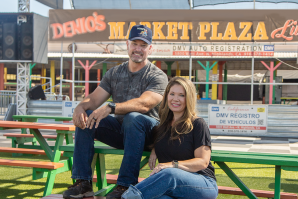
Roseville’s Unique Shopping and Entertainment Gathering Place
Family business spotlight: The Denio family embraces the future while honoring their roots
Eric and Tracy Denio remember Roseville before it was a suburban powerhouse — back when their childhood days were spent roaming among fields, ranches, ponds and gravel pits. Flash forward to today, and Denio’s Farmers Market & Swap Meet is surrounded by oceans of homes and shopping centers that span for miles in every direction. But one thing that hasn’t changed is its ethos.
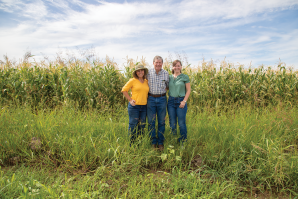
A Pioneer in Organic Farming
Family business spotlight: Pleasant Grove Farms in Sutter County grows popcorn, wheat and rice the natural way
Driving along a country road in rural Sutter County and seeing endless rows of corn, you can’t help but think of the movie “Field of Dreams.” The Sills family decided to build their dream eight decades ago. Pleasant Grove Farms, a family-owned, certified organic grain and bean farm, has been growing corn and other crops for nearly 80 years.
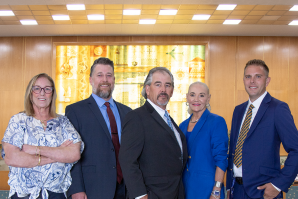
A Stockton Institution
Family business spotlight: The Bank of Stockton has been operating for 157 years
Founded in 1867, Bank of Stockton is the oldest bank in California still operating under its original charter. This longevity and continuity in serving communities with Bank of Stockton branches — as of November, there will be 21 locations throughout the Central Valley — sets this family business apart.

A Fire in the Sky
Family business spotlight: From Macy’s Fourth of July to the Space Needle, Pyro Spectaculars produces more than 400 fireworks shows a year
The show producer opens his laptop, and with a touch of the keyboard the magic begins. Music swells, and a spectacular vision of multicolor sparkling flowers explodes in the night sky, along with golden starbursts and shiny cascading waterfalls.
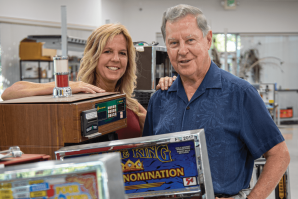
Gambling on Gaming
Family business spotlight: How an Auburn-based company cornered the gambling market
In his lifetime of entrepreneurship, Don Whitaker has managed to mostly avoid competitors. “You try to find a niche where you have no competition,” Whitaker says of his approach to business. He found his niche market with Ceronix, which he started in 1984 out of his Auburn home.




